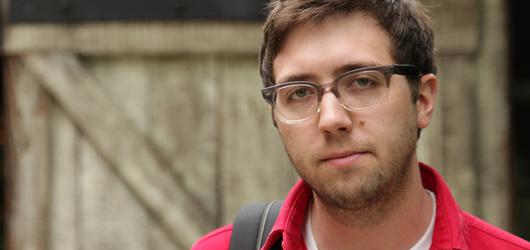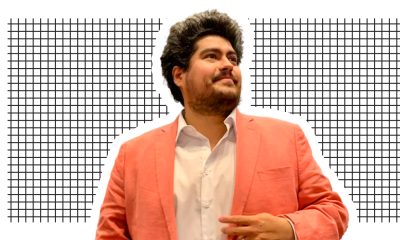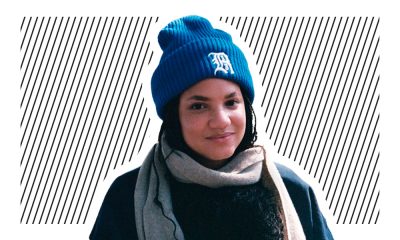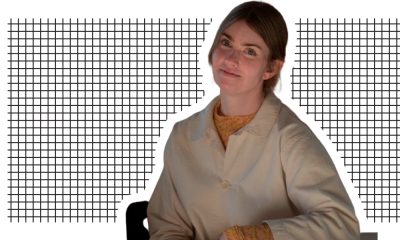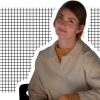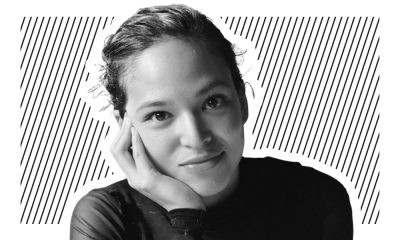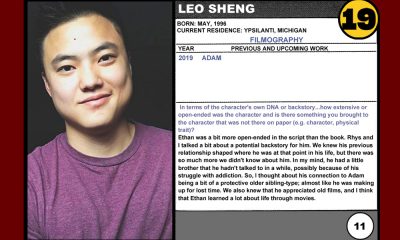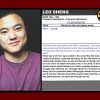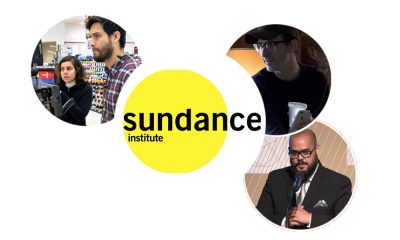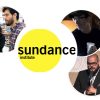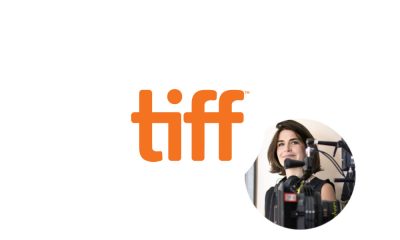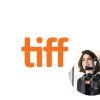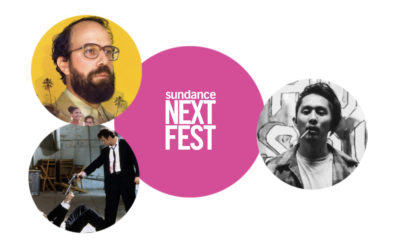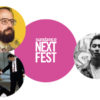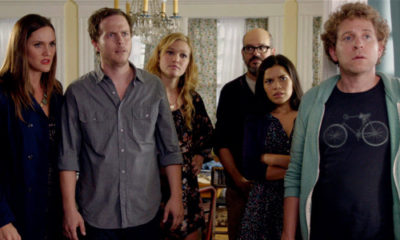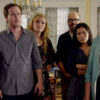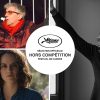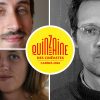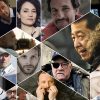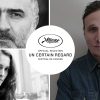Retro IONCINEMA.com
In the Pipeline: Lance Edmands
If you live there, you know Maine is much more than just lobsters and lighthouses. Filmmaker, Lance Edmands, is going to introduce the rest of us to the local side of his home state in his feature film debut, Bluebird. Set in a small Maine town, it’s about a school bus driver who accidentally locks a young boy in a school bus on a cold winter night. The boy is taken to the hospital the next day. The story follows the aftermath of this tragedy and how it affects and changes the families involved.
[Editor’s Note: To coincide with all the attention we’re currently giving to the Sundance Film Festival, we figure there’s no better time to introduce our first In the Pipeline feature of the year with a filmmaker who participated in both the Sundance Screenwriters and Directors labs. And we are returning to this feature in style with Nicole Emanuele a NYC based producer and FSU Film School alumni who is in post production on NOT WAVING BUT DROWNING. She will be profiling more IN THE PIPELINE filmmakers and their projects throughout the year.
If you live there, you know Maine is much more than just lobsters and lighthouses. Filmmaker, Lance Edmands, is going to introduce the rest of us to the local side of his home state in his feature film debut, Bluebird.
Set in a small Maine town, it’s about a school bus driver who accidentally locks a young boy in a school bus on a cold winter night. The boy is taken to the hospital the next day. The story follows the aftermath of this tragedy and how it affects and changes the families involved.
The town is as much a character as any person in this ensemble piece. Covered in snow and ice and surrounded by vast landscape, it’s a former boomtown that now seems disconnected from the modern world. Edmands is looking to find great talent to fill the roles, with the help of casting director Susan Shopmaker (Afterschool, Rabbit Hole). He’s also hopeful reunite with his longtime friend, indie favorite, Jody Lee Lipes (Afterschool, Tiny Furniture, Martha Marcy May Marlene) as cinematographer.
Edmands has worked as an assistant editor and editor in New York City since he graduated from NYU. He’s most noted for editing last year’s South by Southwest breakout Tiny Furniture. He’s also edited Wild Combination; A Portrait of Arthur Russell, and Brock Enright: Good Times Will Never Be The Same plus a slew of commercials and music videos. Lance is shifting his focus back to directing with Bluebird, a project he took to the Sundance Directing Lab this past summer. He’s slated to go into production a year from now, so he’s currently balancing editing work with pre production. Here’s what he had to say about the process and his hopes for the project when we met up at Ted and Honey in Cobble Hill, Brooklyn.
Nicole Emanuele: What is the story of Bluebird?
Lance Edmands: Bluebird is an ensemble dramatic piece set in a logging town in Northern Maine in the middle of winter. It’s about a woman who is a school bus driver who accidentally locks a young boy on a school bus overnight. The boy is sent to the hospital where he struggles for his life. The film is about how all these different characters are affected by this tragedy in this small town. It follows the woman who is the driver and her family, as well as the mother of the boy. It explores how these two families deal with the fallout of the tragedy, and how the same event that breaks them apart eventually brings them back together again. It’s a quiet, experiential piece that is mood and landscape based.
Emanuele: You are a year away from production, where are you now in your process?
Edmands: Right now we are in the preliminary stages of casting and fundraising. We’re putting all of the different the pieces together, our different production partners and various crew members.
Emanuele: What ways are you raising funds for the film?
Edmands: We received the Columbus/Vague NYU Alumni Award and we received some grants from Sundance (the Annenberg Development Grant and the Mark Silverman Fellowship) which are allowing us to travel and do research for the film. While we’re always exploring grants and alternative fundraising, we’re also doing a lot of traditional style fundraising as well, like approaching investors. We’re meeting with the arts commission and government in Maine in terms of what we can do with their tax benefits and things like that. Hopefully we will make a movie that is totally different and outside the mainstream that is still financially viable.
Emanuele: Will the budget inform if you want to attach a larger cast member or go with discovery actors?
Edmands: Since it’s an ensemble movie – a moody atmospheric drama, it’s not the type of film that I want to populate with a bunch of movie stars. We’re looking for great character actors; actors who are hungry for an interesting breakout role. I think the film will be strongest if it has a balanced cast of people who aren’t necessarily familiar with average moviegoers, which will allow this world to feel more authentic. It’s very much an ensemble-driven movie.
Emanuele: When are you planning on shooting and where?
Edmands: We are shooting in January 2012 in Northern Maine. I have pretty strong ties with the state and the small arts community that’s there. We’re working with the town to be a creative partner in the film in a lot of ways. Our goal is to keep the town involved in the shoot and to get the community involved as much as we can.
I think Maine, particularly the landscape, has been a big inspiration for me. These towns that are settled on the edge of the great North Woods are the modern equivalent of frontier town sin a lot of ways. They are on the edge of this massive tract of wilderness.

Emanuele: Is there anything production wise that is essential to the film creatively?
Edmands: It’s very much an experiential movie. It’s less about a plot engine and more about the emotional landscape of these people, so to me it’s important to have a very unique visual approach. We’re shooting on 35mm anamorphic. It’s important for us to have that organic texture that you get with film because a lot of this is about the snow, or about skin or about the cold or the heat or the texture of bark and trees and machines– all these different textures and surfaces. A big part of our goal for shooting is to be able to shoot on film in a way that is manageable for us. We still want to have a small production and a small crew that is mobile and able to allow space for actors and things with out a lot of big bulky equipment, but at the same time the film part of it is very important to the story.
Emanuele: What did you do at the Sundance Labs?
Edmands: The labs are a place to workshop the script. You shoot scenes with actors, which allows you to explore the scenes in a way that allows for experimentation, because it’s not the final film. It gives you a chance to practice on your scenes and explore those scenes, make changes on the fly, work with actors, and find the way into the movie through your conversation with actors. There are advisors there to who are working with you. It’s basically just a big exploration, it’s like a place to sit and creatively think about things in this enclosed boundary where there are no expectations. You don’t ever show your work to anyone outside of that group either, so it’s a safe haven at the same time. You can make mistakes and totally f**k the scene up and that’s fine. In some cases that was my approach. I’m going to change the scene and totally f**k it up and do it how I would never do it in real life and just see how it turns out. It could expose some new element that I wasn’t considering and shed a new light on things. It was probably the best creative experience of my life.
Emanuele: Are you thinking now about distribution and how you want to present your film to the world?
Edmands: To me this is an experience film, and my goal is to have it released in a traditional way– in a movie theater screening on a film print. Of course, this is the ideal scenario. I’m not expecting a huge multiplex situation, but it would be great if people could see this film in a movie theater, that’s really important to me. I’m not really totally sold on digital avenues at this point– We’ll see. At this point I’m just focused on getting the film made.
I don’t feel like there are expectations for it [the film release], which is kinda great. I want to maintain that up until it gets shot. I am doing this interview, but I prefer if it comes from nowhere and people are like “What is this thing?” I would rather everyone just sit back, the lights go down– and they don’t really have any expectations about what’s going to happen and they just go with the story or the experience.
Emanuele: How do your past experiences as an editor inform how you will approach directing this project?
Edmands: It’s just how my brain works. It works from a structural standpoint. It will definitely help me direct because as an editor, I understand what’s important and what’s less so. I know what the focus of each scene will be going into it, and for me it’s about sharpening the focus of the scene, not shooting a hundred angles and finding it in the editing room.
As a filmmaker I really like the reflection process. I really like writing. I really like editing. They are the solitary moments where you can sit and really think about the film. Production is all about responding immediately to different scenarios as they are happening. It’s less about reflection. I think as an editor it’s helped me as a writer because the process is the same. It’s about focusing, it’s about pairing down, it’s about what can you lose– what’s the least you can do and still get your idea across.
Emanuele: Are you going to edit the film yourself?
Edmands: I don’t know yet. I would like to work with someone as a partner, rather than just have an editor or just do it myself. I need fresh eyes and ideas that aren’t mine. Sometimes you’re missing the heart of the scene because you’re so focused on something that isn’t on screen. Maybe it’s in your head, maybe it’s in the script, but if it’s not on screen it’s just not there. Then you’re focusing the scene on something that’s a ghost or a phantom. But ultimately, I’m probably too specific and I’ve edited too much to totally give it away.
Emanuele: Tell me about your directing style – how do you work with actors and your key crewmembers, that part of directing.
Edmands: When it comes to actors and the script I am very open to a certain looseness and vibrancy that makes something feel alive. I think the way to achieve that is to get off the page as much as possible. I look at my scripts as an outline and I think it’s much more important to me to have the actors embody the material.
With the crew it’s sort of similar, but I wouldn’t say that my visual style or my directing style is loose. It’s actually the opposite. I think what’s exciting is the interplay between those things. Having a very stringent, specific, visual style mixed with the looseness of life can be very exciting. In terms of working with cinematographer, I don’t do story boards, but I do have very specific ideas about framing and camera placement and about the certain poetic construction that comes from a very designed visual style. The DP I have worked with in the past – Jody Lee Lipes. He and I share a very similar visual sensibility in the films that we like and the style of visuals that we like, a very controlled, very structured, stripped down minimalist style. We have a secondhand language in that stuff. I am hoping that all the cards fall into place that we can work together again.
I think people have great ideas, I want them to bring those ideas to the project, and hopefully if I am clear in my intent, they will be excited to contribute. I am hoping to create that atmosphere.

Emanuele: What’s your original inspiration for the story?
Edmands: I started with the Maine landscape, the feeling that I got standing in a snowy field in February, with the wind howling. It felt like this place was so far from everywhere else on Earth, and there is a certain kind of isolation and a certain horror to it, yet there’s also a certain sense of peace. I wanted to find a way to show that contrasting feeling that I had in that place. A lot of it started with the visceral emotional response that I got from that landscape… and then the story emerged over time. I wasn’t trying to impose something on it. It came from a lot of different places… sort of developed like a Polaroid. The first step was just little shadows and textures and bits of colors, and suddenly a clearer picture formed. I think my goal with films is to convey an emotion that you can’t necessarily put into words. So it was really hard to put it into words, which is what writing this script is, I had to take this feeling that was both, beautiful and terrible and try and articulate it through the voices of these characters. That was a long process, one that I am still in the middle of.
Emanuele: If you had to give one piece of advise to someone that is about to direct their first film, what would you tell them?
Edmands: Try to write for a world that you have access to. It was really helpful to me to write with a specific place in mind. You can continue to explore further and further out, but you should start close to home, because it’s what you have the most access to. Emotionally and physically.
Nicole Emanuele is a NYC based producer, whose Not Waving But Drowning (2012) won at the Napa Valley Film Festival and was screened at Paris' Champs Elysees Film Festival. A graduate of The Film School at Florida State University, Nicole currently works at YouTube, developing Original Scripted Series. Top Films From Contemporary Film Auteurs: Coen Bros. (Fargo), Lynch (Blue Velvet), Linklater (Boyhood), Polanski (Knife in the Water), Wes Anderson (Royal Tennenbaums).



